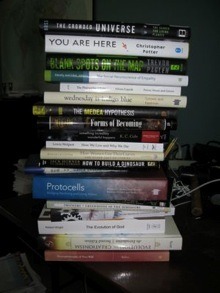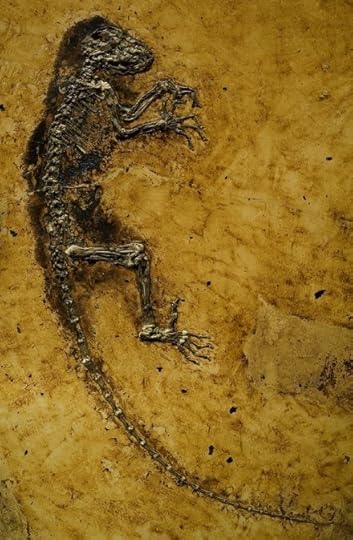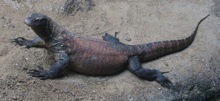Carl Zimmer's Blog, page 123
May 20, 2009
Life On Earth: A Losing Game of Whack-A-Mole?
 Beyond three billion years ago, the fossil record of life on Earth gets very patchy. At 3.4 billion years ago, there’s fairly good evidence of mats of microbes. At 3.5 billion years, there are little globules that have been proposed to be bacteria but which some researchers consider just blogs of minerals. Earlier still there are shadowy isotopic hints–ratios of light and heavy carbon atoms that seem biological rather than volcanic–dating back as far as 3.8 billion years. These, too, are the sub
Beyond three billion years ago, the fossil record of life on Earth gets very patchy. At 3.4 billion years ago, there’s fairly good evidence of mats of microbes. At 3.5 billion years, there are little globules that have been proposed to be bacteria but which some researchers consider just blogs of minerals. Earlier still there are shadowy isotopic hints–ratios of light and heavy carbon atoms that seem biological rather than volcanic–dating back as far as 3.8 billion years. These, too, are the sub
Let Us Not Forget The Books: I Need Your Vote Again
Today I’ve got an interview posted over at Yale Environment 360 with Tony Barnosky, a paleontologist who’s just written a very interesting book called Heatstroke: Nature in an Age of Global Warming . He gazes into a fossiliferous crystal ball to get an idea of what global warming will do to the world’s biodiversity. Short answer: it won’t be pretty.
. He gazes into a fossiliferous crystal ball to get an idea of what global warming will do to the world’s biodiversity. Short answer: it won’t be pretty.
 Which brings me to the subject of books. I love books about science. That’s why I can’t stop writing them. I also like to get my hands on science book
Which brings me to the subject of books. I love books about science. That’s why I can’t stop writing them. I also like to get my hands on science book
May 19, 2009
Darwinius: It delivers a pizza, and it lengthens, and it strengthens, and it finds that slipper that’s been at large under the chaise lounge for several weeks…
 If the world goes crazy for a lovely fossil, that’s fine with me. But if that fossil releases some kind of mysterious brain ray that makes people say crazy things and write lazy articles, a serious swarm of flies ends up in my ointment.
If the world goes crazy for a lovely fossil, that’s fine with me. But if that fossil releases some kind of mysterious brain ray that makes people say crazy things and write lazy articles, a serious swarm of flies ends up in my ointment.
On Friday, a reporter at the Wall Street Journal got a scoop on a new paper on a 47-million-year-old primate fossil that was published today in PLOS One. The story mentioned that the discovery would be revealed at the American Museum of Natural History. It did not
May 18, 2009
Debating the Dragon
 Readers of the Loom may be familiar with the work of Bryan Fry, who studies the evolution of snake venom. (See these two previous posts on his work.) I’ve got an article in tomorrow’s New York Times about his latest paper, to be published this week in the Proceedings of the National Academy of Sciences. In it, Fry and a big team of collaborators argue that Komodo dragons, the biggest lizards on Earth, are venomous. (There wasn’t room in the story to describe their argument that an extinct relati
Readers of the Loom may be familiar with the work of Bryan Fry, who studies the evolution of snake venom. (See these two previous posts on his work.) I’ve got an article in tomorrow’s New York Times about his latest paper, to be published this week in the Proceedings of the National Academy of Sciences. In it, Fry and a big team of collaborators argue that Komodo dragons, the biggest lizards on Earth, are venomous. (There wasn’t room in the story to describe their argument that an extinct relati
May 15, 2009
Tropical Newton [Science Tattoos]

Donovan, a biologist from Brazil writes, “My tattoo talks about the real scientific spirit. It’s a phrase in Portuguese of Isaac Newton: ‘If I have seen further it is only by standing on the shoulders of giants.’”
Grandma–Ding!
 This year marks the fortieth anniversary of the publication of Philip Roth’s novel Portnoy’s Complaint. In 1969, the book also became fodder for one of the oddest ideas in neuroscience: the grandmother cell. What if a neuron in your head only responded to the sight of your grandmother? For a long time, many neuroscientists have dismissed it out of hand. And yet the idea will not quite die.
This year marks the fortieth anniversary of the publication of Philip Roth’s novel Portnoy’s Complaint. In 1969, the book also became fodder for one of the oddest ideas in neuroscience: the grandmother cell. What if a neuron in your head only responded to the sight of your grandmother? For a long time, many neuroscientists have dismissed it out of hand. And yet the idea will not quite die.
Earlier this year a psychologist published an intriguing review of the grandmother cell, arguing that we sho
The Pantheon of Zombifying Parasite All-Stars
Mental Floss has a nice two-post line-up of the weirdest mind-controlling parasites that we know of (1, 2). Some will no doubt be familiar to readers of the Loom, but others may be disturbingly new.
May 13, 2009
In The Prebiotic Kitchen
 To explain the origin of life, scientists seek to explain the origin of its components. The three most important of these are RNA, DNA, and proteins.
To explain the origin of life, scientists seek to explain the origin of its components. The three most important of these are RNA, DNA, and proteins.
Just about all life today uses DNA to encode its genetic information. The only exception are viruses that use a single-stranded version of DNA, known as RNA. The rest of us have RNA in our cells as well, but it carries out other functions. Some RNA molecules are copies of genes that our cells use as templates to build proteins; others can silence ge
carlzimmer.com hacked
Should I take it as a compliment that somebody took the time to hack my online archive of articles? It’s still pretty irritating. Whatever the twisted motivations of the hacker, my web guardians and I are now figuring out how to repair the mess. My apologies to anyone seeking an article.
May 12, 2009
The Worry of Biohacking: Closet Frankensteins or Kafkaesque Government?
There’s a piece in the Wall Street Journal today about biohacking: people experimenting with genetically engineered microbes and viruses at home. It tries to inject anxiety into your brain right from the start, with a headline, “In Attics and Closets, ‘Biohackers’ Discover Their Inner Frankenstein–Using Mail-Order DNA and Iguana Heaters, Hobbyists Brew New Life Forms; Is It Risky?”
I was surprised, however, to discover that the reporter does not mention the one time that somebody actually got ar



